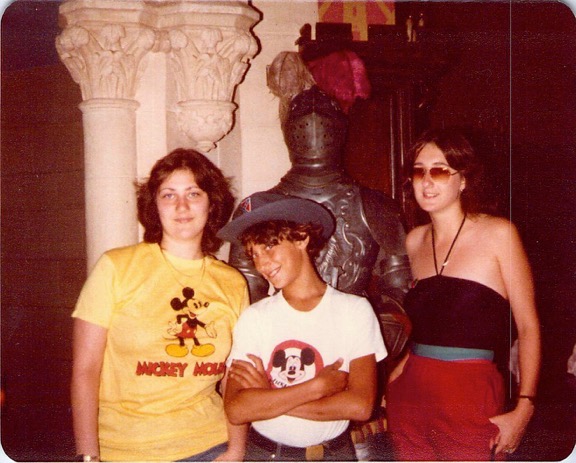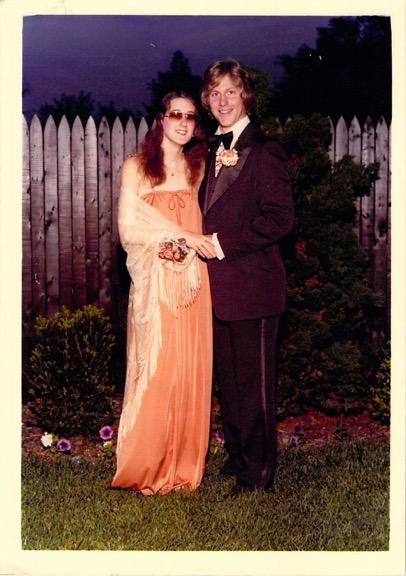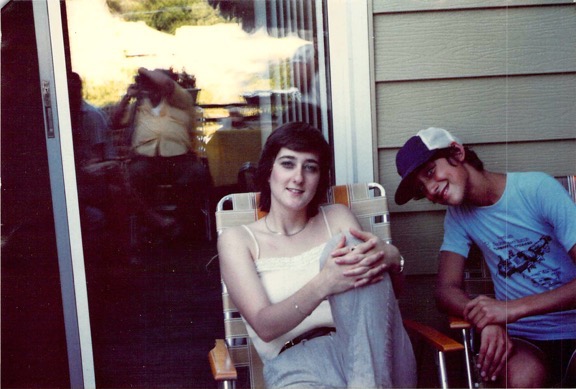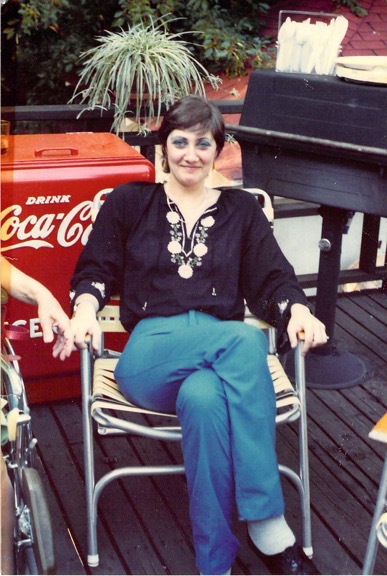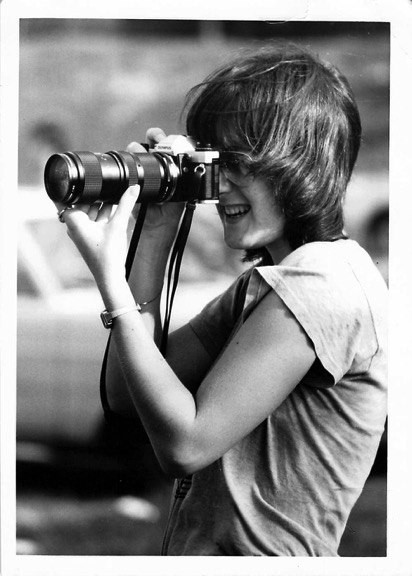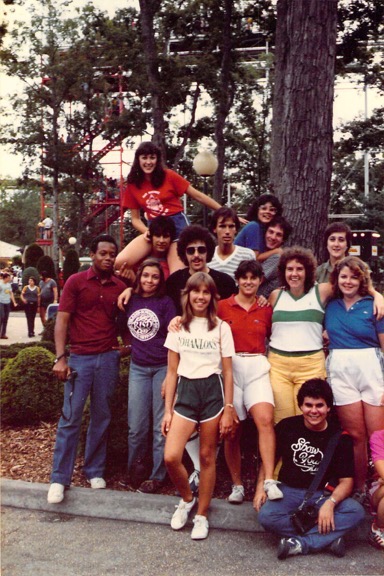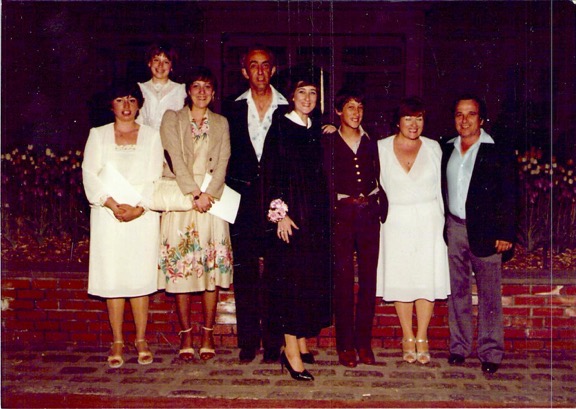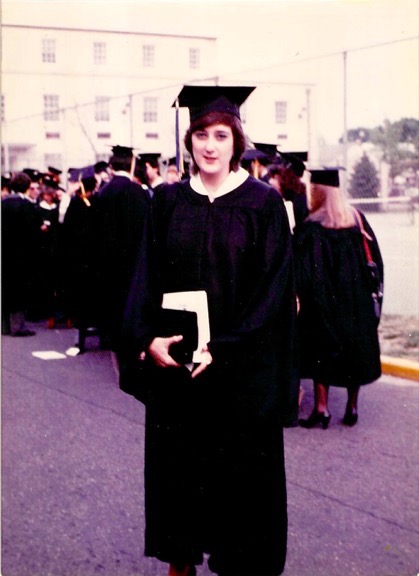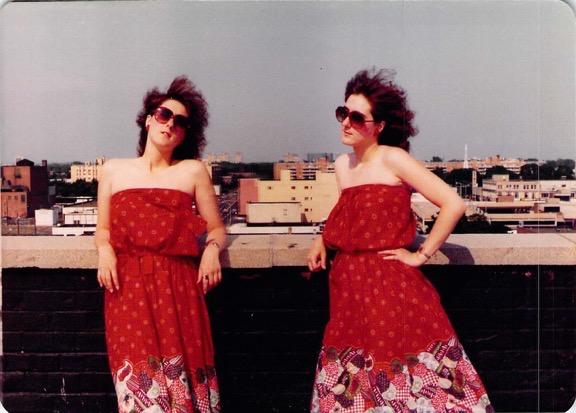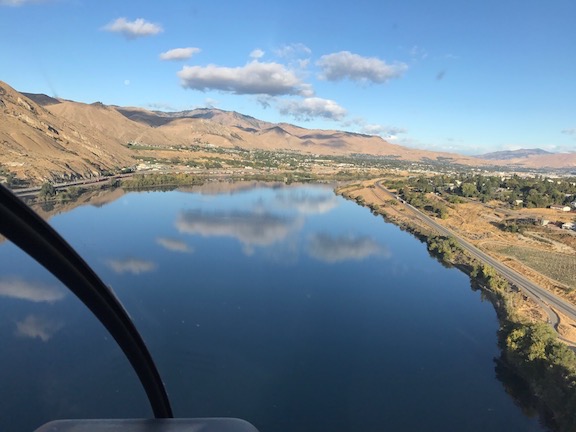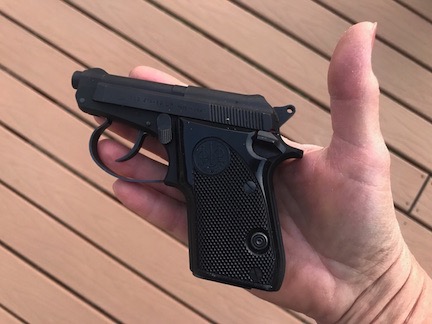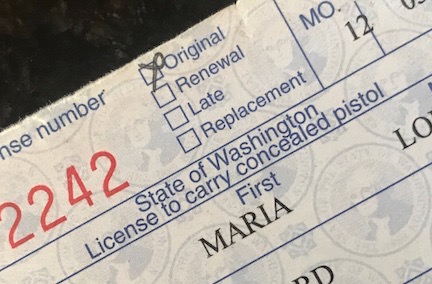Not all gun owners are nuts.
I read something on Twitter this morning that really struck a nerve:
Monitoring? What did he mean by monitoring?
I read some of the comments and found this one:
I don’t think she meant “special” in a positive way. And that really got under my skin.
You see, I’m a gun owner. And although I like to think I’m special, I’m not special in the way Michelle seems to think all gun owners are.
And that’s why I decided to write this post. You see, I’m not the only person in my family who owns a gun and none of them are “special” in the sense that we need to be monitored.
My Father’s Guns
My father worked as a police officer in our small northern New Jersey town of Cresskill from around the time I was born in the early 1960s to his retirement. As you might expect, he owned a gun and I grew up with at least one gun in the house.
I say “at least” because I honestly don’t know how many guns he had. We were taught at a young age not to touch his gun and we didn’t. When he got home from work, he’d put it on the top shelf of a tall bookcase in the foyer or sometimes on top of the refrigerator when he came home for dinner. (He worked three different shifts: 8-4, 4-12, and “midnights” (12-8).) I knew the gun was dangerous and I knew I wasn’t supposed to touch it. I never did.
Well, that isn’t exactly true.
Every autumn, the town held what was called a “Turkey Shoot.” It was held at the local shooting range. They’d put up targets and participants would shoot. The targets were scored and the high score would win frozen turkeys. I think it was a fund raiser, but how would I know? I was a kid.
At least twice when we attended this event, my father let us shoot his gun at the target. He never handed us the gun. Instead, he held the gun with us to point and shoot. I remember it being heavy and the trigger being hard to pull. I don’t remember if I won a turkey. Again, I was a kid.
Girl Scouts
When I was in Girl Scouts, we learned to shoot rifles. This was at an indoor range in the nearby town of Tenafly (I think). The rifles were probably World War II surplus. They could hold one shot and had a bolt action. Again, I was a kid and don’t remember much about it.
I also don’t know why learning to shoot rifles was a Girl Scout activity in my area around 1970, but today I think it’s kind of cool.
I do remember that they taught us to shoot from multiple positions including prone and sitting cross-legged. I was a pretty decent shot.
My Uncle’s Guns
My uncle was a flag-waving veteran of the Korean War, although the closest he got to Korea was the Aleutian Islands in Alaska. He became quite a gun collector and kept most of them in a big gun safe down in his basement, right at the foot of the basement stairs. I vaguely remember him showing some of them to me. Most of them were collector’s items.
In his younger days, he was also a hunter. For years, he had a bearskin rug on the floor in his living room. He’d got the bear on the same trip my dad had shot a deer. (That’s when I first ate venison.)
He was a little crazy with the guns sometimes, but I don’t think he was unsafe. One day when I was just out of college, I visited his family with my boyfriend, who had a very “plain vanilla” family life. My uncle’s family was anything but “plain vanilla.” My uncle staged a fight with his son, my cousin, with my cousin yelling at him from down in the basement stairs. My uncle pulled out a gun and shot it down the stairs from the kitchen. Yes, in his house. The gunshot was loud! But the bullet was a blank. He’d apparently set the whole thing up to give my boyfriend something to talk about when he got home.
I don’t know how many guns he had, but I suspect it was more than 20. I don’t know what happened to them when he passed away.
My First Gun
I got my first gun in the early 2000s, not long after moving from the New Jersey suburbs to Arizona. My future wasband telecommuted to work back in New Jersey, which required him to be away from home 7 to 10 days every month. While he was gone, I was alone with a deaf dog in a house that creaked a lot more than I was used to. I used to lay awake at night, convinced that the creaking I was hearing was someone creeping up the stairs. Keep in mind that the house was at the end of a gravel road, pretty far from the neighbors so it wasn’t as if help could arrive quickly if there was an intruder.
At my request, my future wasband bought us a gun to keep in the bedroom. It was a 38 special revolver.
Of course, being responsible (not “special”) gun owners, we immediately sought training to make sure we could use it safely. The only training we found in the area was a Concealed Weapons Permit class. It was a weekend long and included lots of information about guns, including safety and legality. The guy who taught it with his wife — both of whom wore camouflage outfits to class — was very pro-carry. Remember, Arizona is an open carry state, meaning you can wear or carry a visible gun in most places. The concealed weapons permit enabled holders to carry a gun concealed by clothing or in a purse or backpack. Some people think this is important. I was the only woman in the class and they kept trying to convince me that I’d be safer if I carried a gun with me at all times. I said I wasn’t interested. They said, “Well, what about if you’re in a mall parking lot late at night, parked way out on the edge, and a gang of guys comes toward you.” I replied, “I’d never put myself in a situation like that. I’m not an idiot.”
The class was informative, opening my eyes to a different gun mentality than mine. It also included range time where we had to qualify before passing. Since I was the only woman in the class, I got a bit of attention. I was told that with a little practice, I could be a good shooter. Great.
A side benefit of having a concealed weapons permit was that I could worry a lot less about rules when I took my gun to the range or elsewhere. For example, suppose I’ve got the gun out of sight in my car’s glove box when I get pulled over for speeding. The gun would be considered “concealed” and without a permit to carry it that way, I could get in deep trouble. The course explained how to handle such a situation and the permit made it legal to have the gun in the glove box to begin with.

My Beretta isn’t very practical, but it holds a place in my heart as my first gun. And yes, that’s my hand holding it.
Of course the 38 Special wasn’t really my gun. It was my future wasband’s. I wound up buying something quite a bit smaller, easier to handle, and less practical: a Beretta 21A Bobcat. It’s a semi-automatic handgun with a magazine that holds 7 22 caliber rounds. I bought it brand new in a gun shop and, yes, I did go through a background check process before it was sold to me. It’s less practical for three main reasons:
- If I ever did have to use it to stop a serious attacker, I’d basically have to empty it into his body to stop him/her. 22 rounds aren’t very big.
- It’s extremely picky about ammunition and will jam if I don’t buy the right stuff. A recent trip to the range for some additional training confirmed what I remembered about it: there’s a popular (and not cheap) brand of ammo it simply chokes on. No one wants a gun that will jam when it’s needed.
- I’m not nearly as accurate firing it as I am with a bigger gun. I think that could be resolved with more practice, though.
But since I really don’t need a gun, I never saw a reason to replace it.
And it does have a nice feature that I thought was handy for horseback riding out in the desert: it’s rather unique flip up barrel makes it easy to load a single 22 long “snake shot” round. That turns the little gun into a small shotgun suitable for killing rattlesnakes or deterring coyotes out on the trail.
My wasband eventually replaced the 38 special with a Glock. I don’t know which one, but I do know that I was more accurate with the Glock than the Beretta.
The Big Sandy Shoot
As I’ve blogged about here and here, there’s a twice-yearly event called the Big Sandy Shoot, which his held on some private property in the middle of the Arizona desert. It’s a gathering of gun enthusiasts who get to fire a wide range of weapons at reactive targets. There are strict safety rules with range officers to enforce them. No one gets hurt, although the tracer rounds they use at night have been known to start fires.
Oh, and in case you’re wondering, a “reactive target” is one that literally explodes when hit.
These are hobbyists, mostly, although I suspect more than a few of them are “special.” (Ever see a cannon made out of a fire extinguisher that fires bowling balls? I have.) They’re really into their guns and showing off. It’s interesting, but a bit too hard core for my taste. Since I’ve already blogged about it, I’ll let you read those blog posts to learn how crazy it is.
My Brother’s Guns
My brother shoots for a hobby. He owns fifteen guns — as he just informed me in answer to my texted question — and he’s quite proficient using them. He regularly competes using an STI Edge handgun. According to him:
It’s specifically for competition. I have different barrels for it so I can shoot 9mm, .40 Cal and .22 with it.
My shotgun is a Benelli M2 and my rifle was built by a company called JP
Back in 2013, when I was visiting my brother and his wife, I went with them to one of their competitions. (They both shoot.) It was professionally managed and extremely safety oriented. Rules were followed with no exception — range officers made sure of it. I could see why he enjoyed it. It was challenging stuff, with a variety of target types and scenarios. It got him outdoors year-round, with other people who enjoyed the same hobby. Beats parking his ass on a sofa watching TV, no?
Keep in mind that my brother lives in New Jersey where gun laws are pretty strict. (My uncle lived in New Jersey, too.) I don’t know the details on how he’s required to register, store, transport, or shoot them. But I do know that he competes all along the eastern seaboard.
He and his wife divorced a few years ago. They still see each other occasionally at the range and at competitions.
I tried to find a YouTube video of him shooting but came up empty. He sent me a 30-second video of himself at a competition shooting a rifle but I don’t think it’s up to me to share it online. If he sends me a YouTube link, I’ll add it to this post.
My Shotgun

I got a concealed carry permit good for Washington State when I moved here.
When I moved to Washington state, which I believe is also an open carry state, I brought my little Beretta with me. Then I did the paperwork to get a concealed carry permit here. It’s actually easier here than in Arizona; no class is required. (I think that’s wrong.) I carry it in my wallet, even though I don’t carry the gun.

My Remington 870 Tactical shotgun. I had it sitting by the front deck door with a box of ammo for weeks after the second dog attack.
But when I started having serious worries about coyotes coming into my property to steal chickens or possibly my dog, I started thinking that maybe I needed a more practical weapon. And when my neighbor’s dog got into my chicken yard and slaughtered a total of 18 laying hens and two roosters (over two visits), I made my decision. I bought a shotgun.
The shotgun I bought was a Remington 870 Tactical. It’s a pump action 12-gauge shotgun that can hold 7 rounds. (I don’t keep it loaded.) And no kidding here: I bought it at a local store called Hooked on Toys and yes, they did do a background check on me before completing the sale.
Once again, I took it (and my Beretta) to the range to work with an instructor. A friend and I actually took a course together. The course was created by the NRA and had NRA materials, but the instructor was not an NRA employee and he assured us that the educational and political arms of the NRA are completely separate. (Although I thought that was okay at the time, I now want absolutely nothing to do with the NRA and will never pay for anything if there’s any possibility that part of my money might go to the NRA.) The course was informative and I got a chance to learn how to shoot the shotgun. I discovered that the kickback with the butt against my shoulder hurts like hell and I can be pretty accurate shooting from the hip. Hell, if you can’t hit a target with a shotgun, you probably shouldn’t be shooting a gun at all.
Fortunately, the neighbor’s dog has not returned. Could I shoot it? I don’t know. But the Animal Control folks say it’s legal for me to do so, as long as I kill it.
Not All Gun Owners are Dangerous Nuts
You might be able to see why I was bugged by Michelle’s tweet above. As you might imagine, I didn’t let it go uncommented:
But she’s not the only one making uninformed comments about gun owners. There’s a lot of it going around right now. It happens after every mass shooting.
And although I am a gun owner and have insight why other people own guns, I agree that we need to have some common-sense gun control laws. At a minimum, we need:
- A ban on all guns and accessories that make it possible to fire more than 10 rounds without reloading. These devices should be absolutely illegal to own, let alone sell or use. There is absolutely no reason anyone needs this kind of equipment.
- Registration for all guns, including those sold in secondary markets such as gun shows or private sales. If you own a gun, it should be registered. Period.
- Background checks for all gun owners. The check should be done before each gun is purchased and should include criminal activity, domestic violence complaints, and mental health checks.
- Training requirement for all gun owners. Before you purchase a gun, you should be required to take a qualified class in its use and operation and have a certificate to prove that you’ve taken the class. Additional refresher course training should be required periodically, perhaps every five years.
I don’t believe guns are bad. I believe people are bad. I also believe that we should not make it easy for bad people to do bad things with guns.
The situation we have in this country is absurd, with different laws in every state, many of which make it all too easy for people who are crazy to obtain weapons of mass killing capabilities — like the bump stock the Las Vegas shooter used to fire over 500 rounds without reloading. How can anyone think that’s okay?
The Second Amendment was written in a time when a high-tech gun fired one shot at a time. The Founding Fathers likely never imagined the kind of carnage that could be done with today’s weapons, so it’s pretty silly to keep referring to our “right” to have these kinds of weapons.
And no, a good guy with a gun isn’t the only way to stop a bad guy with a gun. It’s a good way for others to be injured in a crossfire or for the “good guy” to get mistaken for a bad guy and gunned down by police.
And yes, I’m a gun owner. But if the only solution to the gun violence epidemic in this country was to take away everyone’s gun — as they have done in other civilized countries — I’d hand mine over in a heartbeat.
Comments?
Please feel free to share your comments. But if this is your first time commenting here, you might want to read the Comment Policy first to avoid wasting your time. All comments are moderated and I have no qualms about deleting queued comments that violate the policy. Wouldn’t it be a shame if you composed a lengthy, hate-filled manifesto was never published?







